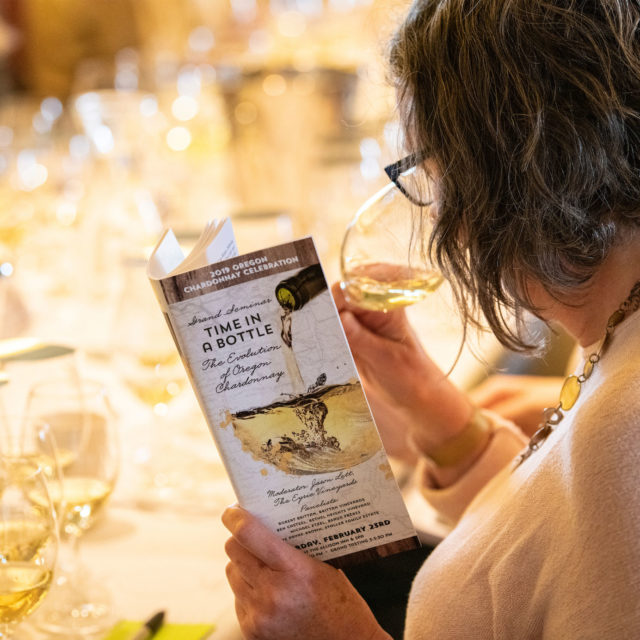The annual Pinot Noir Auction in Oregon’s Willamette Valley is an event designed to highlight the exceptional quality and uniqueness of Oregon’s most popular wine. But at last year’s showcase, something unexpected happened.
For the first time, four Oregon Chardonnays were on the auction block. While the average price for a five-case lot of Pinot Noir was just over $10,000, and the mean price was $8,500, the white wines sold for $9,000, $10,000, $13,000, and $15,000. In other words, the Chardonnays bested the establishment reds by several measures.
Yes, it’s possible that these Chardonnays fetched a high price because they were an anomaly at the auction, and they did happen to be made by some of Oregon’s biggest-name producers. However, the episode pointed to a growing interest in Oregon Chardonnay.
Don't Miss A Drop
Get the latest in beer, wine, and cocktail culture sent straight to your inbox.“I’m aware of a couple of vineyard projects where people are planning only Chardonnay, which 30 years ago would never have happened,” says Doug Tunnell, founder and owner of Brick House Wines in Oregon’s Ribbon Ridge AVA. The long-standing wisdom has been that Pinot Noir was the only great wine made in Oregon — and that the grape made the most financial sense for growers. That assumption may be changing.
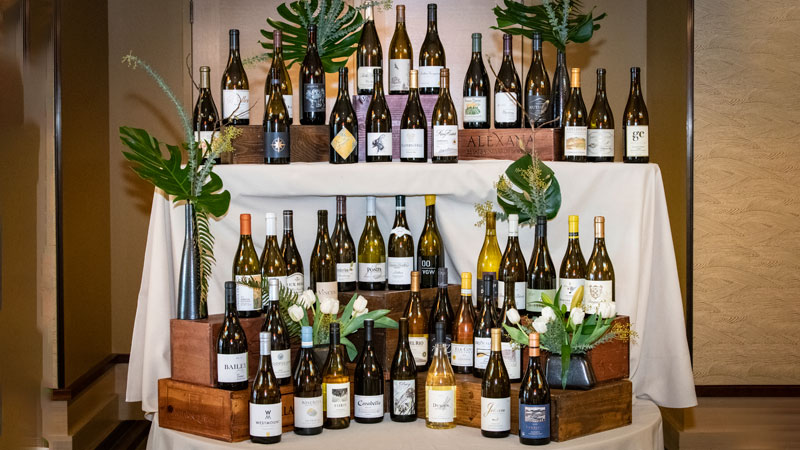
“There’s no question that, at least in recent years, selling Oregon Chardonnay has been much more difficult than selling Oregon Pinot Noir,” says Tunnell. “There’s obviously a reason for that; there’s been lots of marketing for Pinot Noir.” When one of his larger distributors placed an order recently, however, the company’s order for Chardonnay had gone way up. “I thought, ‘Wow, maybe we’re turning a corner.’”
Anne Nisbet, executive director of the Oregon Chardonnay Celebration, has tracked consumers’ growing interest in Chardonnay over the past nine years, when the event started. The Chardonnay celebration, a one-day event that takes place on Feb. 22, expanded from a small gathering of winemakers to a much larger consumer-facing event with a seminar and tasting for some 400 attendees. In 2019, the event hosted 51 wineries; in 2020, some 56 wineries will be on hand to pour.
The Rocky History of Chardonnay in Oregon
Admittedly, Chardonnay had a rough start in Oregon. Many of the state’s early grape growers planted Pinot Noir and Chardonnay because of Burgundy’s success with the varieties, but the outcomes didn’t match up. “Back in the ’70s and the ’80s, there were really very few clonal selections available to us,” says Tunnell. “Most of those that were available in Oregon had come out of California.” Those Chardonnay vines required more heat and sunlight than the Willamette Valley could offer. As a result, the fruit didn’t get ripe enough, and the wines were acidic and unappealing. Frustrated, many vineyard owners ripped out their vines.
And yet, as the average yearly temperature has risen in Oregon over the past decade, the wines made from older Chardonnay clones have improved, Tunnell says. “But what really transformed the picture, as far as I’m concerned, was the arrival of the Dijon Chardonnay clones.” Growers started planting them in the early 1990s, and winemakers could quickly see a difference in the quality of their wines. “My experience with them was amazing,” Tunnell says. “I just thought, ‘This is the right Chardonnay for the right place.’”
Chris Hermann, owner of 00 Wines in Carlton, was a big believer in Oregon Chardonnay even when the haters said it could never make premium-quality wines. He worked as an investor, legal advisor, and business consultant for winemakers for 30 years before starting his own label in 2013. Many of his clients were French, and they consistently told him that the quality of the fruit — both Pinot Noir and Chardonnay — was some of the best they’d tried anywhere in the world. In his mind, if the fruit was that good, there was no reason the state couldn’t produce world-class wines.
The quality of Oregon Chardonnay has also steadily improved as people have figured out how to work with the grape. When Oregon started producing premium Pinot Noirs in the 1970s, the wines struggled to gain attention because local producers didn’t yet know how to coax the best out of the fruit. It took time for the quality of the winemaking to catch up with the quality of the fruit. Producers making Chardonnay have followed a similar trajectory.
Now, as more winemakers gain experience with the grape, they’re getting on the Chardonnay train. Chris Dickson, the winemaker at Twill Cellars in Lake Oswego, credits businesses such as Cameron Winery, Eyrie Vineyards, and Bethel Heights Vineyards for showcasing outstanding Oregon Chardonnay for decades. “Now that there is a resurgence of interest from growers and winemakers with Chardonnay, the ante has been upped and we all get to contribute in working towards making world-class Chardonnay,” Dickson says.
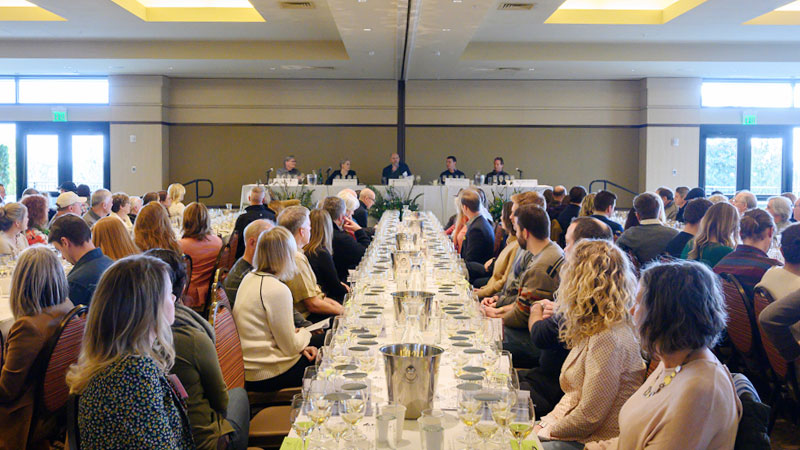
An Oregon Style of Chardonnay
The other factor contributing to the growth in Oregon Chardonnay is changing consumer tastes. Kelly Prohl, owner of the Houston-based wine concierge service Double Decanted, has seen increasing interest in fresher, brighter wines from clients who used to buy richer California Chardonnays. “There will always be people who like the big style, but some people are shifting,” Prohl says. “They’re starting to see more that there’s a style out there that’s sitting in between California and Burgundy. I feel like Oregon is carving its spot.” Prohl says her favorite Oregon Chardonnays strike a balance between acidity and fresh fruit, and have a distinctive minerality that she describes as “the icing on the cake.”
Carrie Wynkoop, owner of Cellar 503, a club that exclusively sells Oregon wines, agrees that a distinctly Oregon style of Chardonnay is beginning to emerge. “I think it’s still under development, but it’s a hybrid of the French and California style,” he says. “Oregon is generally tending toward the French style, but with maybe a little more of the creaminess and buttery-ness of the California style.”
Like many Oregon producers, 00 Wines’ Hermann has leaned toward the Burgundian style of winemaking. “We’re making wines that have a very specific flavor profile, textural quality, and fruit-acid balance,” he says. “Our wines have high natural acidity and lower sugar, which is what gives the wine tension in the mouth when you’re first tasting it. The best Chablis and best Côte d’Or wines have those characteristics.”
However, Hermann, like nearly everyone else, doesn’t want to be tied down to one style of Chardonnay. “There is no such thing as Oregon Chardonnay,” he emphasizes at one point in the interview. “There are just Chardonnays made for people with different palates and goals.”
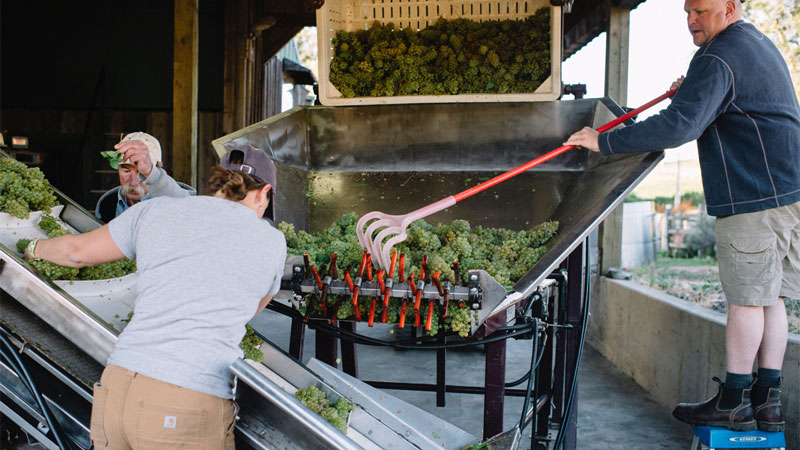
Part of that sentiment is due to the malleability of the grape. “You can take it and make it almost any kind of wine you want,” says Tunnell, of Brick House Wines. “The winemaker has a great range of ability and tools to shape the Chardonnay.”
And then there’s the rogue tendencies of Oregon winemakers, with their endless capacity for experimentation, Wynkoop says. “There will also be a few outliers who are doing interesting and exciting things with the grapes.”
Will Oregon Chardonnay Eventually Topple Pinot Noir?
With all of the excitement about Chardonnay, is there any chance it will supplant Pinot Noir as the king of Willamette Valley wines?
Hermann believes it’s possible. “It’s a wine with quality on par with Pinot Noir and maybe even surpassing it,” he says. “Talking to people in Burgundy, they can envision a day when Chardonnay may be the preeminent varietal. This is a place with extraordinary potential.”
Oregon is at the right longitude and latitude, and has the perfect climate for Chardonnay, he points out. It has a complex palette of soils, and it has a growing cadre of winemakers who are invested in perfecting their Chardonnay winemaking techniques. “We already have world-class Pinot Noir, and Oregon has the attention of the world,” he says. “We have the opportunity to make something on the same level or even greater than Pinot Noir.”
Twill Cellars’ Dickson, on the other hand, doubts that Oregon’s Chardonnays could one day overtake its Pinot Noirs. First, there’s a supply problem: Just 2,406 of the state’s vineyard acres were planted to Chardonnay, compared to 20,616 Pinot Noir acres under vine in 2018, according to the Oregon Wine Board.
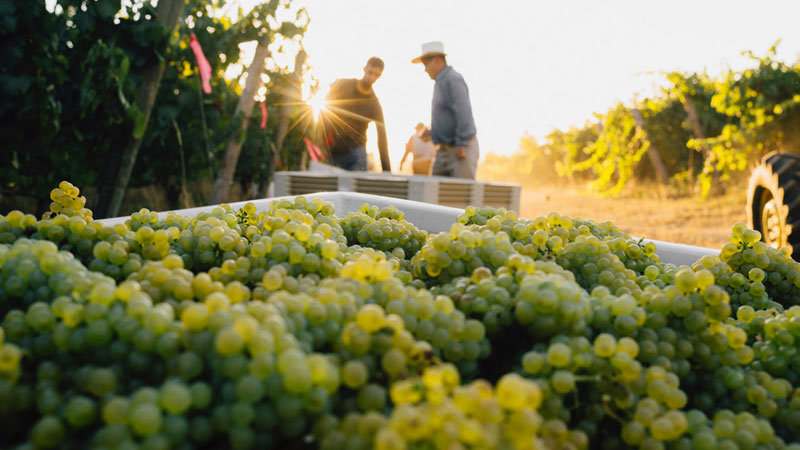
Then, there’s the global demand for Oregon’s Pinot Noirs, which is strong and growing. Dickson thinks of the analogy in music terms, with supporting varieties like Chardonnay playing the role of the band you’d see at a local club on a weeknight, whereas Pinot Noir is the top-selling arena headliner. “As Willamette Valley Pinot Noir has become salient for the consumer, these other varieties will likely remain less mainstream,” Dickson says. “Chardonnay will rise and gain more attention, but when you mention wine in the Willamette Valley in 10 years, most folks will still think Pinot Noir.”
Regardless of whether Chardonnay eventually reigns, there’s little doubt that the variety has gained a foothold and is likely to stay. “I don’t think it will be Chardonnay instead of Pinot Noir, but I think it will be Chardonnay in addition to Pinot Noir for sure,” Wynkoop says. “We’re already starting to see the preponderance of Chardonnay here in the state and people talking about it. It will only continue to make a name for itself.”
This story is a part of VP Pro, our free content platform and newsletter for the drinks industry, covering wine, beer, and liquor — and beyond. Sign up for VP Pro now!
